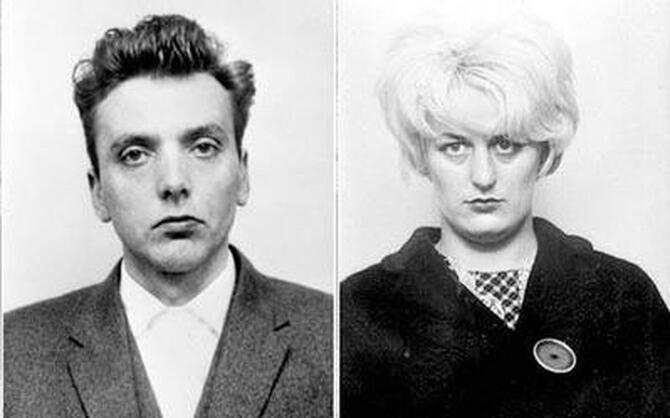 Mugshots of Ian Brady and Myra Hindley, October 1965. Mugshots of Ian Brady and Myra Hindley, October 1965. The 1960s "Moors Murderer," Ian Brady, still haunts the British psyche. His recently published book shows why. by Stephen Lemons First published by Salon.com, January 4, 2000 Ian Brady's darkly handsome visage is forever floating to the surface of Great Britain's collective psyche, a sleek, brooding specter of malevolence and sadism that the tabloids and the broadsheets simply cannot leave alone. The most iconic image in Brady's portfolio of infamy was snapped in 1966 as he was being tried for three of his five murders of Manchester children and teens during a two-year killing spree. Sitting in the back of a police car on his way to court, the stylish, Scottish-born sociopath exudes an imperious nihilism as foreboding as it is seductive. In one particularly sinister, oft-used head shot, a defiant Brady looks like he could give suspected terrorist mastermind Mohammad Atta lessons in ghoulishness. On February 29, 2000, the Sun took up the whole front page with this picture and the bold legend "Brady: Let Me Leave This Cesspit in a Coffin." The story told of the murderer's campaign to starve himself at Ashworth Mental Hospital, near Liverpool, where he's a permanent resident. So far British justice has been unwilling to intervene, and his keepers have been force-feeding him. 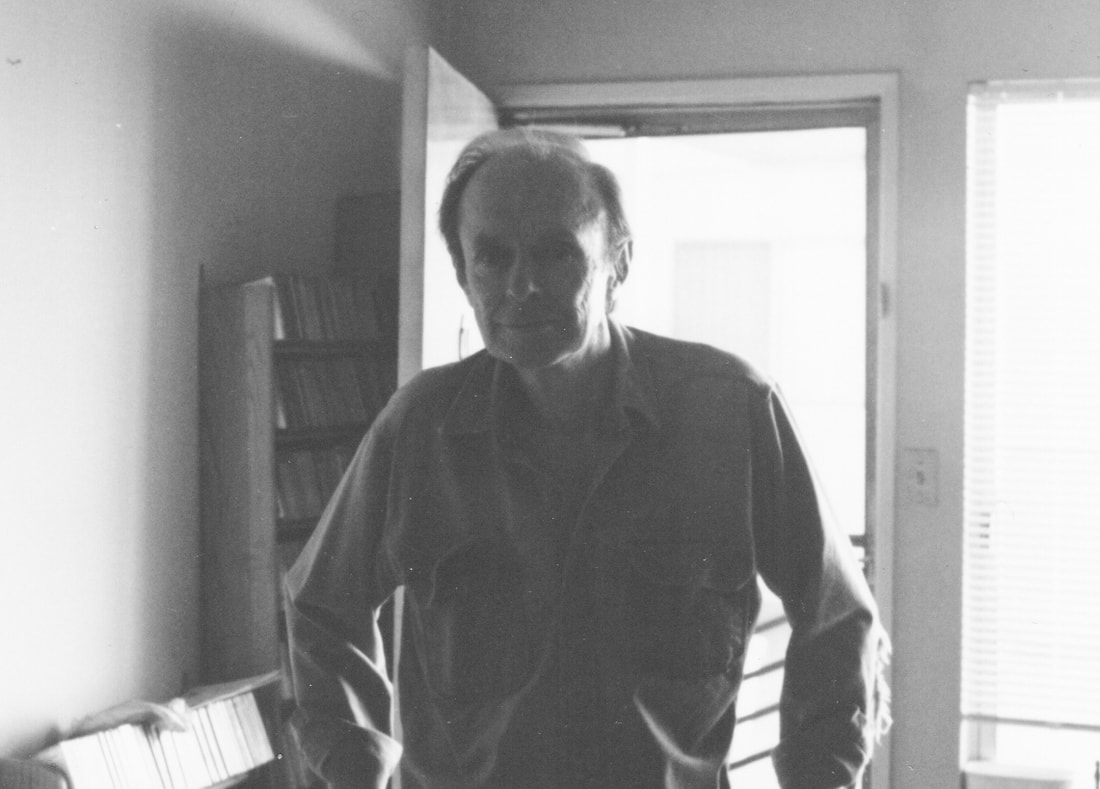 Selby, circa 2000, in his Los Angeles apartment. (photo by Stephen Lemons) Selby, circa 2000, in his Los Angeles apartment. (photo by Stephen Lemons) A modern-day Dante discusses drugs, the American nightmare and literature's last exit by Stephen Lemons First published on Salon.com, October 26, 2000 Hubert Selby Jr. is a freak, an anachronism, a throwback to an era when literature mattered and American writers wrote about something other than Marilyn Monroe's hairdo or the last time they had sex with their daddies. Cut from the same cloth as such recently deceased legends as Paul Bowles, Charles Bukowski and William S. Burroughs, the 72-year-old Brooklyn-born author of harrowing novels such as "Last Exit to Brooklyn" and "Requiem for a Dream"(now a film by hotshot director Darren Aronofsky) seems hopelessly out of place in today's fiction market. A Kafka lost in La-la Land. "It's funny," says Aronofsky, his generation's answer to Martin Scorsese, when asked about the man whose nightmare he's just translated to the big screen with the help of stars Jared Leto, Marlon Wayans, Jennifer Connelly and Ellen Burstyn. "When we went to Cannes to premiere the film, no one wanted to talk to Ellen or to me. They all wanted to talk to Hubert Selby Jr. He was the celebrity over there. Europe, unlike America, recognizes his contribution to literature." 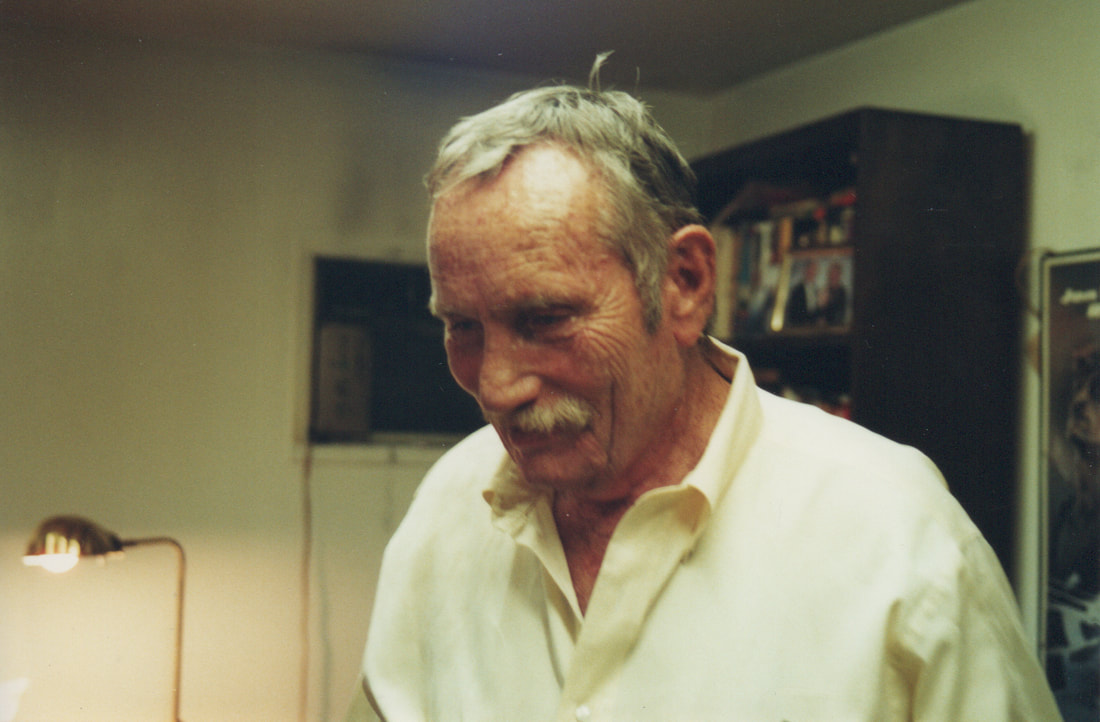 Bunker talking with the author in the bungalow office behind his Los Angeles residence. (photo by Stephen Lemons) Bunker talking with the author in the bungalow office behind his Los Angeles residence. (photo by Stephen Lemons) Ex-con and man of letters Edward Bunker discusses his new memoir, "Education of a Felon," and life as an upstanding citizen. by Stephen Lemons First published on Salon.com, April 24, 2000 Edward Bunker has a face like an ax, a voice like a buzz saw and the watery blue eyes of a saint. Standing in the middle of an office garage behind his picture-perfect home in L.A.'s tony Hancock Park, he lights a half-smoked cigar for the umpteenth time -- the matches burning down close to his fingers before they fire up the cherry. And then leans back on his heels as he answers my question: "Is there any similarity between a criminal and an artist?" "Both tend to have a sociopathic deviancy in their attitudes," he says, sucking on the stogie. "They don't see things like the average citizen. So to that extent, there is. Dustin even made that comment somewhere." 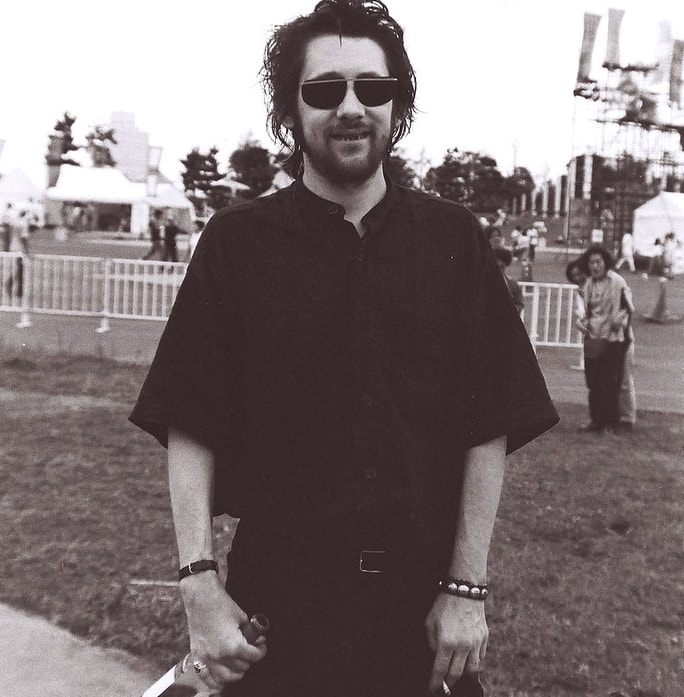 Shane McGowan in the early 1990s, Yokohama, Japan. (photo by Masao Nakagami via Wikimedia Commons) Shane McGowan in the early 1990s, Yokohama, Japan. (photo by Masao Nakagami via Wikimedia Commons) The life-embracing, death-defying founder of the Pogues is a king hell drinker, a writer and one of the last of a vanishing breed. by Stephen Lemons First published on Salon.com, July 31, 2001. Shane MacGowan, the Irish Charles Bukowski, known for a craggy set of teeth that has inspired more similes than Stonehenge and a liver that would've made James Joyce weep, is one of the few remaining practitioners of a literary tradition that fuses an angry lust for extremes with the exploration of same in poetry or prose. Once upon a time, aspiring writers dived face first into fleshpots, saloons, drug dens, streets and abattoirs, both foreign and domestic. Those gritty, violent, experience-driven universities of transgression produced the likes of Henry Miller, Jean Genet, Malcolm Lowry, Fyodor Dostoevski, Brendan Behan, Knut Hamsun, Paul Bowles and Alexander Trocchi, among others. Shane MacGowan is one of the last of their dying breed. MacGowan's gargantuan exploits in the realms of substance abuse have been well documented by admirers and detractors alike. Apparently, he was fired from the Pogues, the legendary, London-based Anglo-Irish rock group he co-founded in the early '80s, after his band mates decided in 1991 that they could no longer abide his missing tour dates because he was incapacitated by drink. In doing so, the Pogues signed their own death warrant. MacGowan, the apotheosis of the inebriated Celtic rebel, was the one the crowds wanted. The one-time wife of brilliant, tortured novelist Malcolm Lowry discusses her controversial new memoir about their tempestuous relationship
by Stephen Lemons First published on Salon.com, January 4, 2001 Pixyish and fair, with lively brown eyes that belie her age, Jan Gabrial, 89, pauses for a moment before making a surprising observation about her first husband, British novelist Malcolm Lowry, author of "Under the Volcano," one of the masterpieces of 20th century fiction. "Malcolm was a very educated man, a brilliant conversationalist and an excellent athlete," Gabrial recalls. "He did have one problem though -- a very small penis. It didn't bother me. I felt we could work around it. But it bothered him. That was something he never really overcame. In his adolescence it had been a problem; his brothers teased him about it, apparently." 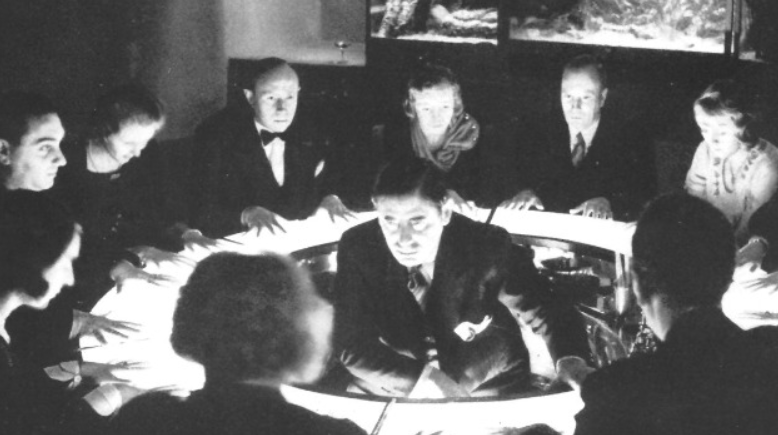 A new biography tells the bizarre tale of the Jewish psychic who met with the future Fuhrer by Stephen Lemons First published on Salon.com, February 28, 2002 In the weeks leading up to Adolf Hitler's appointment as Reichschancellor on Jan. 30, 1933, there was nothing inevitable about the Austrian corporal's ascension to power. Results of the 1932 November Reichstag elections were disappointing for his National Socialist Party, with the Nazis suffering losses in the German parliament while retaining about a third of the seats there. Nazi coffers had been drained dry by the campaign. Hitler had endured significant defections from his movement and threatened suicide. Some Nazis began to wonder if he had the right stuff to be their Führer. It was at this point that Hitler, falling back on his belief in the occult, called the most renowned clairvoyant in the land to his headquarters at the Hotel Kaiserhof in Berlin for a private session. The man Hitler met with that day is the subject of a recent biography (the first in the English language), "Erik Jan Hanussen: Hitler's Jewish Clairvoyant," by Mel Gordon. 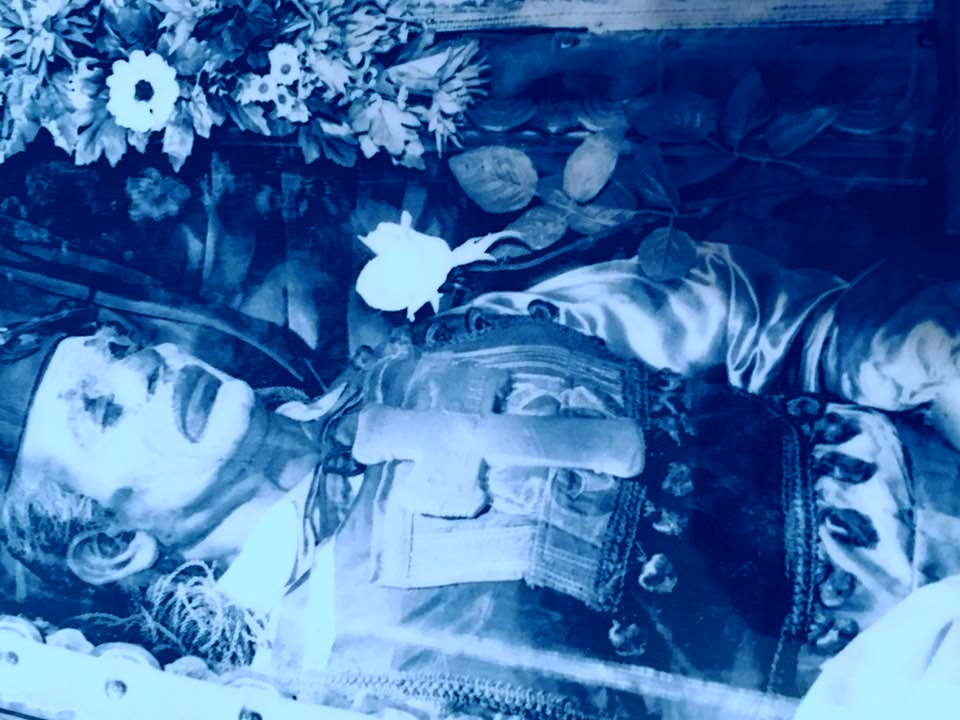 You can laugh, but the mummified clown at the California Institute of Abnormalarts appears to be serious business by Stephen Lemons First published on Salon.com, March 26, 2002 If Federico Fellini and Salvador Dalí had ever collaborated on a funeral service, it might have resembled what the California Institute of Abnormalarts in the North Hollywood section of Los Angeles did a few weeks back. There on a chilly February evening, about 60 mourners, curiosity seekers and full-fledged freaks had gathered for coffee, cake and a clown corpse hermetically sealed in a glass box and displayed onstage in a moldy coffin. According to the Byzantine prayer cards handed out at the entrance, these were the earthly remains of one Achile Chatouilleu, an American circus performer who died in 1912, asking that his body be forever on display in the clown attire and makeup he wore in life. Attendees of this memorial service for Chatouilleu (whose last name reportedly translates as "French tickler") gained entrance with a donation of five dollars and a gift for the dearly departed. Canned hams, skeleton dolls, bottles of booze and packages of condoms were but some of the presents proffered by clubgoers, most of whom had learned of the event by word-of-mouth. Often the mouth in question belonged to none other than the C.I.A.'s ingenious impresario Carl Crew, a former actor in his late 30s whose credits include the starring role in the low-budget 1993 flick "Jeffrey Dahmer: The Secret Life," wherein he quite literally makes meatloaf out of sedated victims. 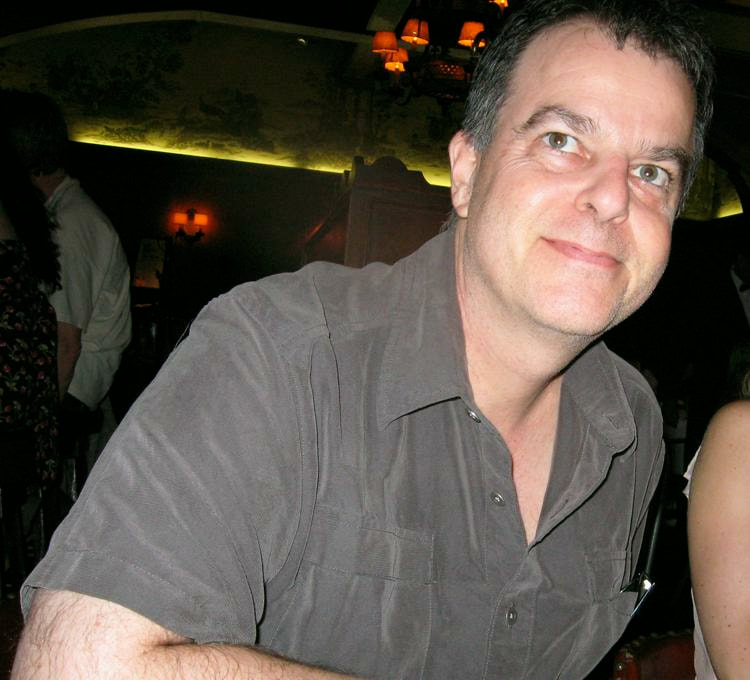 Adam Parfrey at Musso & Frank's, Hollywood, 2007. (photo by Rick Hall via Wikimedia Commons) Adam Parfrey at Musso & Frank's, Hollywood, 2007. (photo by Rick Hall via Wikimedia Commons) Feral House publisher Adam Parfrey is about to administer the coup de grâce to Western civilization by Stephen Lemons First published on Salon.com, September 20, 2000 Plump, suave and swathed in black, Adam Parfrey stands before me flipping through a gruesome stack of color photos depicting headless torsos, severed limbs and various bodies sliced and diced like mincemeat. Could be a Jeffrey Dahmer wet dream or the Hannibal Lecter cookbook -- take your pick. Suddenly, a small frown appears on Parfrey's face. "I don't like the way this red looks here," he tuts. "Oh, here's an article we translated from Spanish titled 'Hacking Mom.' Seems the man attacked his mom with a machete. Macheteo a su madre." 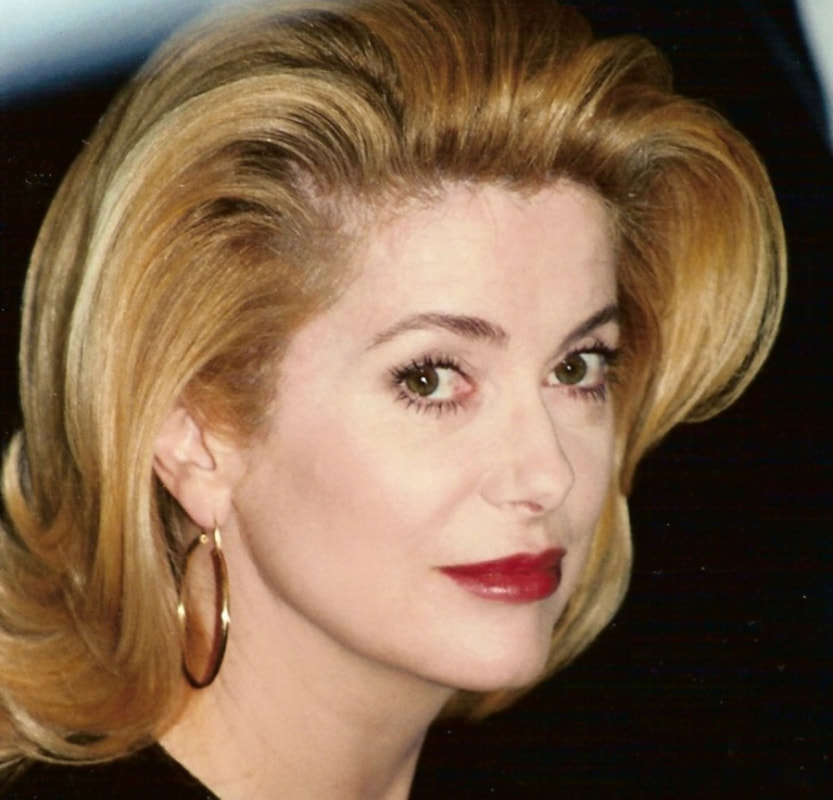 Catherine Deneuve at Cannes in 1995 (via Wikimedia) Catherine Deneuve at Cannes in 1995 (via Wikimedia) Grand seductress Catherine Deneuve talks about taking chances, working with Bjork and starring in the new musical "Dancer in the Dark." by Stephen Lemons First published on Salon.com, September 29, 2000 Catherine Deneuve smells delicious. Seated directly across from me at a small table, she is even more attractive in person than on film. You must forgive me if in the presence of an actress who's mesmerized audiences worldwide for over 30 years in more than 90 films including Belle de Jour, The Last Mètro, The Umbrellas of Cherbourg and so on, all I can initially think about is that she smells like a ripe piece of exotic fruit. Hell, I'm only a man. "You like it?" she asks with a smile, as if her fragrance has had the proper effect -- disarming any male reporter who comes too close to her. "A friend got it for me in Paris at a very small place where they sell only five perfumes. This one is called 'Mediterranean Lily.'" |
StephenLemonsWriting is an addiction. Products of that addiction have been compiled here. Archives
March 2023
Categories |
© Copyright 2017-2024 STEPHEN LEMONS
 RSS Feed
RSS Feed